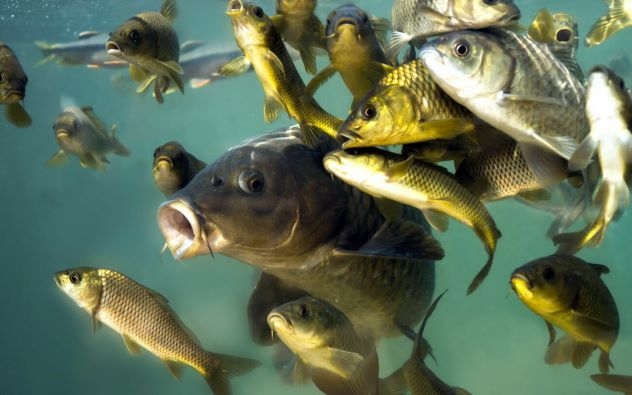
Scientists of “National Agrarian Science and Educational Center” JSC subsidiary - the West Kazakhstan branch of the LLP «Fisheries Research and Production Center» made an online consultation on the topic "A rational approach to fisheries in water reservoirs of the West Kazakhstan and Aktobe regions." Speakers: Tumenov Arthur Nasibullauly, director of the West Kazakhstan branch and Pilin Dmitry Valerievich, senior researcher.
The speakers presented a hydrological review of the studied reservoirs with the characteristics of the fishing ichthyofauna, as well as an analysis of the approved limits for fish catch for 2019. The experts gave comprehensive answers to the most pressing questions asked during the online consultation.

Speakers noted that fish resources are completely dependent on the state of water bodies, which are their habitat. In the West Kazakhstan region there are about 200 rivers and streams with a total length of 4600 km, 144 lakes, of which 94 are salty and brackish. We should also mention the floodplain lakes of the Ural River, of which there are more than 100. One river Zhaiyk belongs to the fishery reservoirs of international importance. There are 86 reservoirs of local significance - small rivers and reservoirs organized on them, sections of the Ural-Kushumskiy irrigation and watering system, allocated to separate reservoirs, lakes of the Bolsheuzenskaya and Malousenskaya irrigation and watering systems and other water bodies. The largest fishery reservoirs are Shalkar, reservoirs on the Kushum river (Kirovskoye, Bitikskoye, Donglekskoye and Pyatimarskoye), Rybnyi Sakryl and Saryshyganak lakes.
In reservoirs of the West Kazakhstan region, more than 60 species of fish live, of which the following are commercial ones: pike, bream, white-eyed, bluebill, silver and gold carp, common carp, podust, chub, ide, roach, rudd, tench, catfish, perch, pike perch and bersh. In the Zhaiyk river and in water bodies connected with it, the white-eye, bluebill, podust, chub, and chekhon are quite common. On the Zhaiyk river, from the sturgeon to amateur catches include the sterlet. Other sturgeon species are not found in amateur and control catches. It should be noted that all species of sturgeons are included in the Red Book of the International Union for Conservation of Nature with the status of "endangered" and "the number of which is declining." Such red-book species as whitefish and the Caspian lamprey have not been found in catches for many years (more than ten years).

In reservoirs of local importance fishing is carried out. The approved catch for 2019 was 302 tons of fish. More than 70% of the catch comes from low-value crucian carp, roach, rudd and small perch. The share of valuable species is not more than 20%, and falls on pike, bream, carp, catfish and pike perch. 10% of the catches are invertebrates - long-toed crayfish.
The increase in catch volumes is possible due to the development of reserves of reserve reservoirs. Thus, catch volumes can be doubled. Valuable fish species, in addition to fishing, experience an anthropogenic load of amateur catch, the popularity of which as a type of hobby has become very high in recent years. However, the burden of recreational fishing is difficult to determine due to the lack of effective statistics. However, according to indirect data, they are comparable with the volume of catch by commercial types of tools. One of the significant factors limiting the reproduction of fish resources is the hydrological regime. So, due to unfavorable hydrological conditions that has been going on for two years, the projected catch volumes for 2020 will be reduced by almost 40% compared to 2019.
There are two ways to overcome these difficulties - increasing the commercial attractiveness of low-value species through the development of new methods of deep processing and the transition from the capture of fish resources from natural reservoirs to the cultivation of marketable fish in lake-commodity and pond farms.
Recall that all the lectures of the speakers of the Scientific and Practical Center for Fisheries can always be reviewed on the YouTube channel of the LLP «Fisheries Research and Production Center» https://www.youtube.com/channel/UCuS5M4RaYq2Kt-qUtNYDcpQ/
and on instagram, on the website of the LLP «Fisheries Research and Production Center» https://www.instagram.com/fishrpc/

